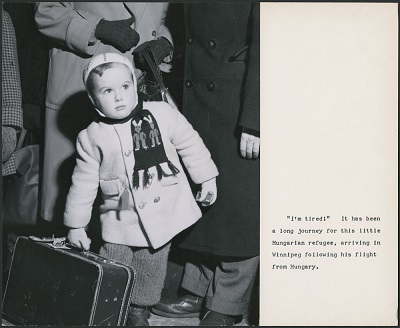Refugees of the 1956 Hungarian Revolution National Historic Event
Toronto, Ontario

Hungarian refugee arrives in Winnipeg, 1960
© Canada. Dept. on Manpower and Immigration | Dept. de la Main-d'oeuvre et de l'Immigration / Library and Archives Canada | Bibliothèque et Archives Canada
Address :
1575 Lake Shore Boulevard West, Toronto, Ontario
Recognition Statute:
Historic Sites and Monuments Act (R.S.C., 1985, c. H-4)
Designation Date:
2010-01-12
Other Name(s):
-
Refugees of the 1956 Hungarian Revolution
(Designation Name)
Research Report Number:
2008-048; 2014-CED-SDC-07
Importance:
With the support of its population, Canada admitted, as immigrants, more than 37,500 Hungarian refugees during this international crisis
Plaque(s)
In 1956 and 1957, Canada received more than 37,500 refugees who fled Hungary after Soviet troops marched on Budapest to crush a revolution that sought political reform and independence from the Soviet Union. The Canadian government acted quickly to select, transport, and resettle people in cooperation with non-profit organizations, establishing an important model for the reception of future refugees in this country. Hungarian refugees settled across Canada, many choosing to live in Toronto, Vancouver, Montréal, and other urban centres, where they made significant contributions to economic and cultural life.